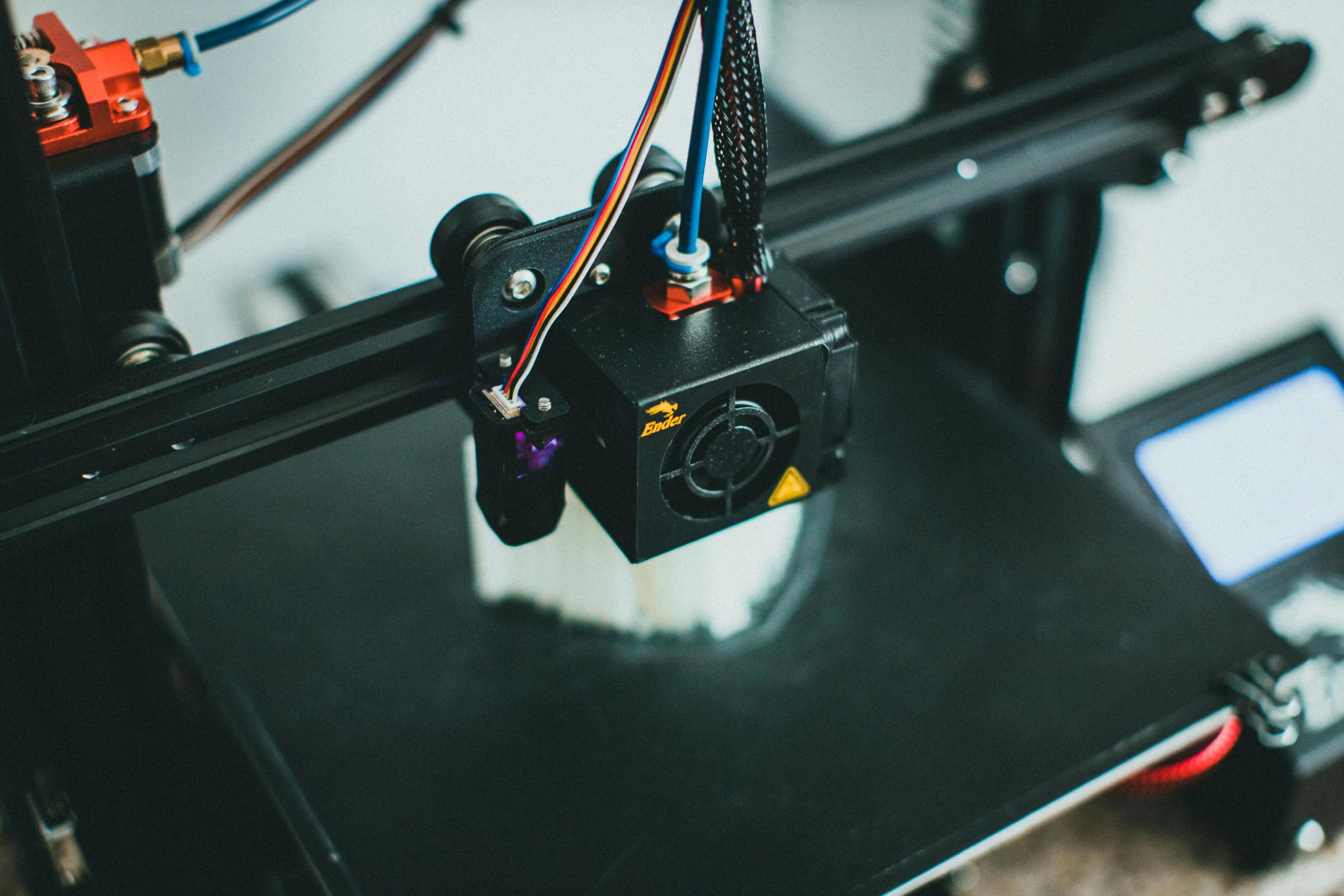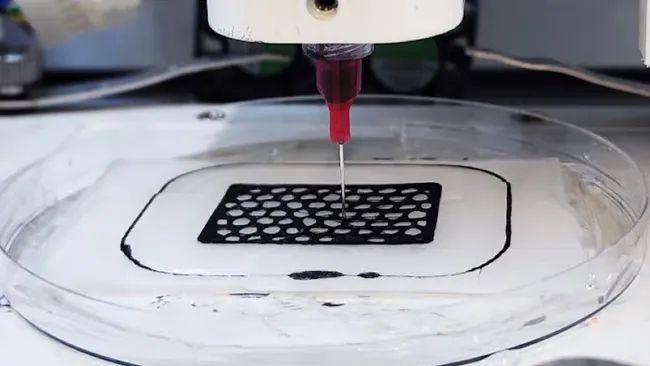
Innovative 3D Printing Technology Powered by Saltwater Instead of Light and Heat

Innovative 3D Printing Technology Powered by Saltwater Instead of Light and Heat
A multinational team of researchers has developed a novel 3D printing ink that can be used to create easily recyclable electronic circuits without the need for toxic chemicals, heat, or even light.
With conventional 3D printing inks , you have to do what’s known as post-curing. This is where the printed structure is bombarded with either UV light (in the case of resin printing) or a heat treatment (such as with fused deposition modeling, or FDM printing) to force it to bond chemically and fully harden, thereby achieving its necessary mechanical properties. The research team notes that this process will often require the addition of “chemical crosslinkers (e.g., crosslinkers with aldehyde, cyanoacrylate, or epoxide groups), which may adversely affect human health and environments.” Without this step, parts of the printed objects could be relatively softer and weaker than the surrounding structure, impacting how well the item will work, and for how long.

The newly developed ink , which uses a non-toxic polymer called poly(N-isopropylacrylamide), or PNIPAM, needs neither light nor heat. For it to cure, it only needs room temperature salt water. PNIPAM has long been used by the pharmaceutical industry in drug delivery systems. In this case, it is extruded from a healthcare-grade 3D printer directly into a solution of calcium chloride and water to form neatly arrayed, electrically conductive structures the moment the polymers contact the water. And because the PNIPAM molecules crosslink with themselves due to this “salting out” effect, the material doesn’t need to be bathed in ultraviolet light and high temperatures at the end of the printing process. The research team envisions the new ink being used in a variety of applications including “water-soluble disposable electronic circuits, carriers for delivering small materials, and smart actuators.”
In their study, the team mixed the ink with carbon nanotubes, then used it to print a circuit board capable of driving a small light bulb. The circuit was then recycled by being submerged in freshwater, where it dissolved. The water was then allowed to evaporate out of the solution in a low-temperature oven after which the PNIPAM could be recovered. The entire construction, recycle, and recapture process is performed under ambient conditions, “with no need for additional steps, specialized equipment, toxic chemicals, heat or pressure,” Senior author Professor Jinhye Bae from the University of California, San Diego told Tom’s Hardware. “This offers a simple and environmentally friendly approach to recycle polymer materials.”
Source: Nature Communications via Tom’s Hardware
Also read:
- [New] Clear Cinematic Vision - Top Camera Stabilizers Reviewed for 2024
- [Updated] 2024 Approved Mastering Image Retrieval on Pexels A Step-by-Step Guide
- ChatGPT Unveiled: An In-Depth Guide to Microsoft's AI Breakthrough
- Delete Gmail Account With/Without Password On Samsung Galaxy S23 FE
- Discovering Tomorrow: Samsung Unpacked 2025 - Key News, Rumors & Revelations Await!
- DIY Mechanical Keyboard Maintenebrance: Easy Cleaning Strategies Inside
- Easy Ways to Manage Your Tecno Phantom V Flip Location Settings | Dr.fone
- Fixing 'Missing Mfplat.dll' Error on Your Computer Efficiently
- How to Fix Android.Process.Media Has Stopped on Samsung Galaxy F34 5G | Dr.fone
- In 2024, A Deep Dive Into Samsung's Picture Perfection App
- In 2024, How to Screen Mirror on Apple iPhone 6s? | Dr.fone
- IPhone 2023 Unboxing: Estimated Pricing Details, Arrival Date Theories, and Speculative Tech Features
- Mastering Picture-in-Picture Mode: A Step-by-Step Guide for Android Devices
- Mastering the Microsoft Store: Eradicating Code 0X80072F30
- New From Script to Screen on a Budget 7 Essential Filmmaking Software
- Professional Tips for Blurring Your Backdrop During Google Meet Sessions
- Resetting Your Lenovo Machine: A Comprehensive Walkthrough for Beginners
- Seamless Experience: Implementing Appx/Appxbundle Files From Store
- Unlock Creative Expression with These 6 Standout Notekeeping Apps
- Title: Innovative 3D Printing Technology Powered by Saltwater Instead of Light and Heat
- Author: Andrew
- Created at : 2024-12-12 11:21:16
- Updated at : 2024-12-16 19:48:27
- Link: https://tech-renaissance.techidaily.com/innovative-3d-printing-technology-powered-by-saltwater-instead-of-light-and-heat/
- License: This work is licensed under CC BY-NC-SA 4.0.